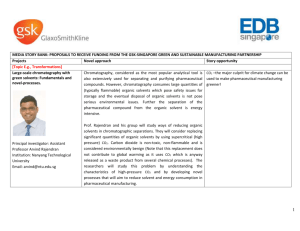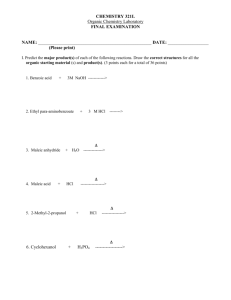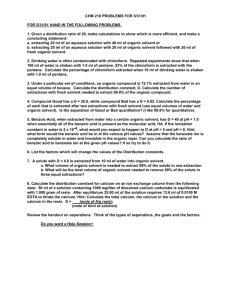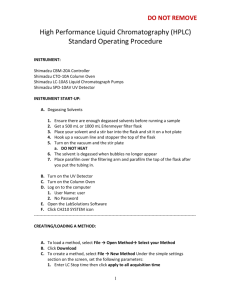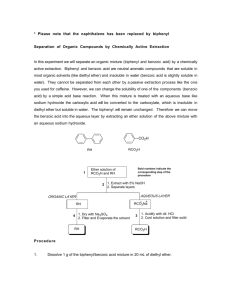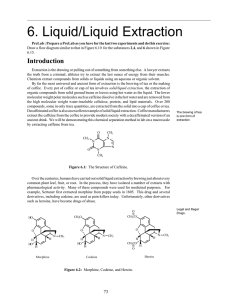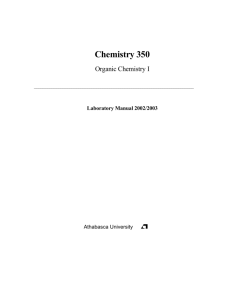EXPERIMENTAL PROCEDURE:- Proceed as it is explained above
advertisement
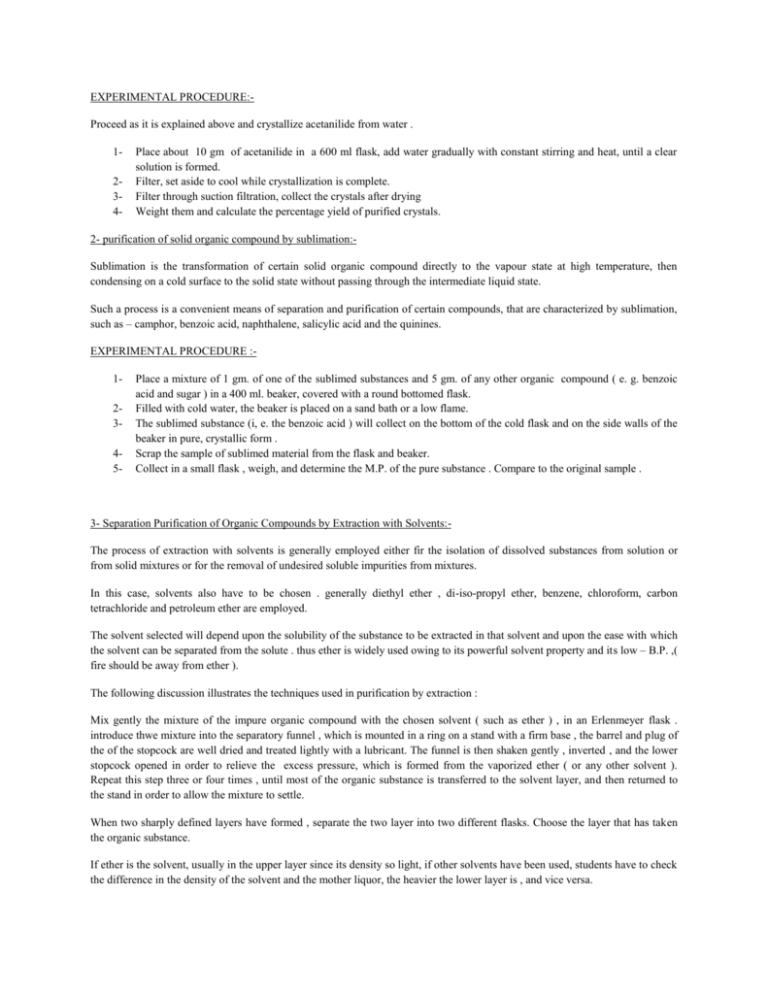
EXPERIMENTAL PROCEDURE:Proceed as it is explained above and crystallize acetanilide from water . 1234- Place about 10 gm of acetanilide in a 600 ml flask, add water gradually with constant stirring and heat, until a clear solution is formed. Filter, set aside to cool while crystallization is complete. Filter through suction filtration, collect the crystals after drying Weight them and calculate the percentage yield of purified crystals. 2- purification of solid organic compound by sublimation:Sublimation is the transformation of certain solid organic compound directly to the vapour state at high temperature, then condensing on a cold surface to the solid state without passing through the intermediate liquid state. Such a process is a convenient means of separation and purification of certain compounds, that are characterized by sublimation, such as – camphor, benzoic acid, naphthalene, salicylic acid and the quinines. EXPERIMENTAL PROCEDURE :12345- Place a mixture of 1 gm. of one of the sublimed substances and 5 gm. of any other organic compound ( e. g. benzoic acid and sugar ) in a 400 ml. beaker, covered with a round bottomed flask. Filled with cold water, the beaker is placed on a sand bath or a low flame. The sublimed substance (i, e. the benzoic acid ) will collect on the bottom of the cold flask and on the side walls of the beaker in pure, crystallic form . Scrap the sample of sublimed material from the flask and beaker. Collect in a small flask , weigh, and determine the M.P. of the pure substance . Compare to the original sample . 3- Separation Purification of Organic Compounds by Extraction with Solvents:The process of extraction with solvents is generally employed either fir the isolation of dissolved substances from solution or from solid mixtures or for the removal of undesired soluble impurities from mixtures. In this case, solvents also have to be chosen . generally diethyl ether , di-iso-propyl ether, benzene, chloroform, carbon tetrachloride and petroleum ether are employed. The solvent selected will depend upon the solubility of the substance to be extracted in that solvent and upon the ease with which the solvent can be separated from the solute . thus ether is widely used owing to its powerful solvent property and its low – B.P. ,( fire should be away from ether ). The following discussion illustrates the techniques used in purification by extraction : Mix gently the mixture of the impure organic compound with the chosen solvent ( such as ether ) , in an Erlenmeyer flask . introduce thwe mixture into the separatory funnel , which is mounted in a ring on a stand with a firm base , the barrel and plug of the of the stopcock are well dried and treated lightly with a lubricant. The funnel is then shaken gently , inverted , and the lower stopcock opened in order to relieve the excess pressure, which is formed from the vaporized ether ( or any other solvent ). Repeat this step three or four times , until most of the organic substance is transferred to the solvent layer, and then returned to the stand in order to allow the mixture to settle. When two sharply defined layers have formed , separate the two layer into two different flasks. Choose the layer that has taken the organic substance. If ether is the solvent, usually in the upper layer since its density so light, if other solvents have been used, students have to check the difference in the density of the solvent and the mother liquor, the heavier the lower layer is , and vice versa. Collect the mixture that contains the organic substance and expel the solvent either on a water bath in a hood, or by distillation, followed by recrystallization to get the purified organic substance. It is not always to use organic solvents in extraction of organic compounds, sometimes certain chemically active solvents, such as acids or basis are used. This is used in the separation of acidic organic compounds or basic organic compounds from their solutions. Experimentally this will be done in the future experiments.


